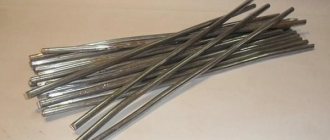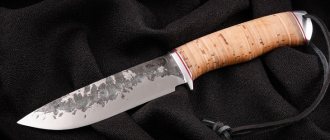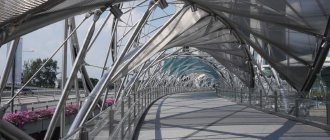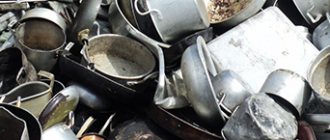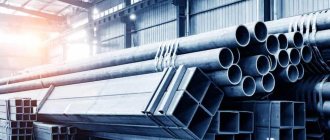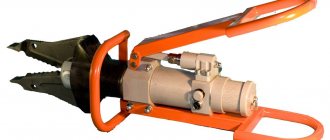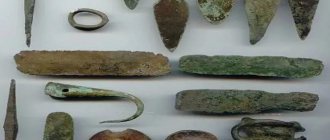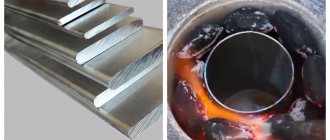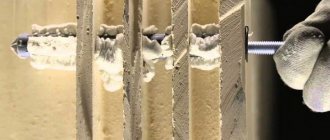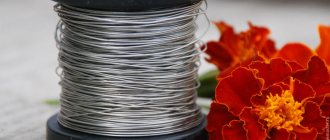What steel is the fittings made of?
Reinforcement is a set of elements that improve the performance of reinforced concrete structures by increasing strength and compensating for various stresses. Due to the active use of reinforced concrete in modern construction, reinforcement of various categories is used very widely.
Reinforcing elements can be flexible (individual rods of various profiles, knitted and welded mesh, frames) and rigid (angles, I-beams, channels and other rolled products). The material for rods is usually steel (in accordance with GOST 10884-94), although there are composite (basalt-plastic, fiberglass, carbon-fiber), wood (bamboo) and other options.
Most often, the fittings are made of low-alloy or carbon steel. In general, the production of steel rod reinforcement is regulated by GOST 5781-82.
Depending on the processing method, steel reinforcement can be cold-drawn or hot-rolled.
Steel grades used for the manufacture of reinforcing elements: AI - St3kp, 18G2S, AII - St5sp, 25G2S, AIII - 35GS, A400S, A500S, 32G2RPS.
The choice of a particular steel grade determines the manufacturing technology, as well as the characteristics and operational features of the manufactured fittings:
- construction with reinforcement by hood (category “B”);
- construction reinforced, in accordance with GOST 10884-81 (category “T”);
- fittings with the possibility of welding (category “C”, for example, fittings A500C);
- reinforcement with increased resistance to corrosion cracking (category “K”).
The most popular brand of fittings in Russia is A500C; such a high level of demand is largely explained by the selected steel grade (ZPS), which is characterized by a lower content of alloying components. This ensures good ductility, strength, as well as high-quality weldability (A500C welded joints are not subject to brittle fractures).
What grade of steel is construction reinforcement made from?
Construction reinforcement plays the role of a reinforcing frame, increasing the strength and durability of concrete buildings. In the modern construction industry, standard reinforced concrete slabs and special castings of various shapes and purposes are widely used. Construction reinforcement is required to have high tensile and shear strength; in addition, it should not be hardened and weld well with all types of welding. This is achieved due to the low carbon content with a sufficient degree of purification from harmful non-metallic impurities.
The cheapest and most common reinforcing steel are steels St.2 and St.3, since they are the most widely used in the construction industry and have sufficient strength. In addition, a number of special reinforcing steels are used.
There are a number of classes of reinforcing steels, depending on their mechanical properties: A-I (A240), A-II (A300), A-III (A400); A-IV (A600), A-V (A800), A-VI (A1000). The higher the class, the higher the strength of the reinforcing steel, which is determined by the carbon content, degree of steel purification, and the presence of alloying additives. Reinforcement is produced by hot rolling, both round and periodic (corrugated) profiles.
Round reinforcement has greater strength, while corrugated reinforcement has better adhesion to concrete. Round reinforcement is more often used for structures operating in tension and shear; in addition, round reinforcement is used when thin reinforcement is used in a large product, then due to the large surface area of the entire set of reinforcing wire in one slab, high strength of the structure as a whole is achieved.
Reinforcement with a diameter of more than 32 mm is almost never produced round.
The table shows the steel grades used for the manufacture of reinforcement of a given diameter.
For the production of class A-V (A800) fittings, it is allowed to use steel grades 22Kh2G2AYU, 22Kh2G2P and 20Kh2G2SR. The diameters of the fittings indicated in brackets can be produced by agreement with the consumer. In practice, there are no clear requirements for the diameter of the reinforcement; for example, instead of 6 mm reinforcement, 8 mm can be used, but such deviations are allowed only for large-sized products. When using reinforcement of a different diameter, it is always necessary to specify the amount of reinforcing wire, mainly through the cross-sectional area of the reinforcement per unit area of the concrete casting.
In addition to the composition and properties of carbon steels, which must comply with GOST 380-88, the content of all main components in alloyed reinforcing steels is standardized. The composition of the most common alloy reinforcing steels is given in the table.
sulfur and phosphorus are given according to the upper ceiling, the content of copper and, especially nickel, as a rule, does not need to be limited, since copper is too expensive a component for metallurgists to allow its high content, and nickel at a content of up to 1.5%, in the case carbon content is not more than 0.35%, does not have a negative effect in the form of too high hardness, or the formation of hardening structures during welding.
It should be noted that steel with the lowest carbon content is used mainly to make small-diameter reinforcement; steel with a higher carbon content is used to produce more massive reinforcement for the construction of high-rise buildings. Reinforcing steels with additions of aluminum (the letter “Y” in the index) and chromium (the letter “X”) have significant resistance to corrosion, and can be used for the production of reinforcement, the operation of which involves high humidity (dams, bridges, pier supports, hydraulic buildings, etc.).
Most often, alloying additives are added to reinforcing steels in order to improve their weldability and reduce the coefficient of thermal expansion. Since the weakest points in a frame made of reinforcement are the welding points of large rods, and the durability of a reinforced concrete structure is determined, among other things, by thermal distortions of the reinforcement during temperature changes.
Depending on the ferroalloys used in the deoxidation of steels, other alloying elements, such as nickel, titanium, vanadium, etc., may also enter the steel. Their content should not exceed 0.3% (each). Unlike rolled steel, from which load-bearing structural elements are produced (I-beams, channels, profile pipes, etc.)
), reinforcing steels never contain large amounts of manganese or nickel, as in steels with a zero coefficient of thermal expansion, used to assemble huge welded structures (bridges, railway tracks, gas pipelines, etc.).
Armature used for the manufacture of all types of reinforced concrete structures, which is necessary to enhance the strength characteristics of concrete. Basically, flexible steel is used - rods, welded meshes and frames, but sometimes rigid steel is also needed - rolled I-beams, channels and angles. Since reinforcement is used for the production of critical building parts and structures and must withstand enormous loads, special reinforcing steel is used for its manufacture.Construction fittings vary:
— by profile for round reinforcement, smooth reinforcement (class A1) and periodic profile reinforcement (class A3);
- according to material for steel and non-metallic reinforcement;
- according to the manufacturing method for rod reinforcement, rope reinforcement and wire reinforcement;
- based on the principle of working on non-stressed and prestressed reinforcement;
— for their intended purpose on working fittings, distribution fittings and mounting fittings;
- according to the installation method: welded and knitted in the form of separate rods, meshes and frames.
A1 fittings
A1 fittings are made from high-quality low-alloy carbon steel of periodic or smooth profile, as well as from cold-drawn wire. Today, the industry produces woven meshes with special cells, which are intended for reinforcing thin-walled reinforced concrete structures. For the reinforcement of beams, purlins, and crossbars, the industry produces spatial or flat reinforcement frames.
There are the following types of contacts with concrete that A1 reinforcement can have: friction, adhesion - that is, a connection using concrete coating of a steel reinforcement element, connections on shear bonds, compression of steel reinforcement with reinforced concrete after shrinkage of the concrete, electrochemical interaction between steel reinforcement A1 and cement mortar. For the reinforcement of prestressed structures, with the exception of high-strength piece steel reinforcement, steel bundles are used, as well as strands that are produced from high-strength wires and ropes consisting of several strands. Today, A1 fittings are widely used in various industries. A1 fittings are used in construction, during the production and transportation of gas and oil, at various enterprises in the oil and gas industry, the coal industry and for a variety of construction purposes. The A1 fittings are distinguished by the fact that they can be used even in the most aggressive environments, for example, when working with chlorine or natural gas. They produce A1 fittings of the following classes: At400S, At500S, At600, At600S, At600K, At800, At800K, At1000, At1000K and At1200.
A3 fittings
• Fittings 25G2S
• Fittings 35GS
• A500S fittings
• B500С fittings
A3 reinforcement is widely used for the manufacture of a wide range of reinforced concrete structures. At the same time, A3 construction reinforcement significantly increases the strength characteristics of such a product. For its manufacture, high-quality special reinforcing steel is used. Special steel alloyed with elements such as titanium, silicon, manganese, and chromium is also used. Such steel can significantly enhance the various mechanical properties that A3 reinforcement can have. The chemical composition of the steel from which A3 fittings are produced must comply with GOST 380-94 (for low-carbon steel) and GOST 14959-79 (for high-carbon steel). The characteristics of A3 reinforcement most directly affect the quality of the reinforced concrete product. That is why special requirements are placed on A3 fittings. In particular, A3 reinforcement must have very good weldability and machinability, increased resistance of the reinforcement metal to corrosion, high strength, as well as material ductility and fatigue strength. Also, A3 reinforcement must provide good adhesion to concrete. Construction reinforcement A3 of a periodic profile is a round profile with two longitudinal ribs, as well as transverse protrusions that run along a three-way helical line. For profiles that have a diameter of 6 mm, protrusions are allowed that run along a single-start helical line. For profiles with a diameter of 8 mm - along a two-start helical line. For the convenience of consumers, A3 reinforcement, which has a diameter of 8-10 mm, can be unwinded.
The minimum size that A3 reinforcement can have is 6 mm, and the maximum is 80 mm. Construction reinforcement A3, which has a diameter of less than 10 mm, is supplied in coils. Construction reinforcement A3, having a diameter of 100 mm or more - in special rods, which can have a length from 6 to 12 m or a measured length. According to its operational characteristics, A3 reinforcement is divided into weldable and resistant to corrosion cracking. Weldable reinforcement A3 is designated by the index “C”. A3 reinforcement resistant to corrosion cracking is marked with the letter “K”. If A3 reinforcement is designated by the index “T”, then in this case you need to know that such A3 reinforcement is intended for thermally strengthened reinforcing steel. If the A3 fittings are marked with the index “B”, then such A3 fittings are suitable for reinforced hood. A3 reinforcement, depending on its properties, can be divided into different strength classes.
Strength class is the standardized value of the physical or conditional yield strength of steel in newtons per square millimeter established by the standard. The angle of inclination of the transverse protrusions is the angle between the transverse protrusions (corrugation) and the longitudinal axis of the rod.
The pitch of the transverse projections is the distance between the centers of two successive transverse projections, measured parallel to the longitudinal axis of the rod. The height of the transverse protrusions is the distance from the highest point of the transverse protrusion to the surface of the core of a periodic profile rod, measured at right angles to the longitudinal axis of the rod.
The nominal diameter of reinforcing steel of a periodic profile (profile number) is the diameter of a smooth round rod of equal cross-sectional area. Depending on the mechanical characteristics, A3 fittings are divided into classes: AI (A240), AII(A300), AIII(A400), AIV(A600), AV(A800), AVI(A1000). Construction reinforcement of class A1 uses a smooth profile, while the rest use a periodic profile. Armature 25G2S
A3 25G2S fittings are widely used in various types of construction and reconstruction. Reinforcement 25G2S can be used for reinforcing reinforced concrete structures, both auxiliary and load-bearing. It is strong, reliable and gives the same characteristics to reinforced concrete.
The chemical composition of this steel provides the reinforcing bars with a high degree of weldability, which allows the use of 25G2S reinforcement in welded metal structures. Also, this type of reinforcement has corrugations that are different from other brands, which provides excellent adhesion to concrete. Transverse reinforcement is designed to reduce the risk of inclined cracks; it binds the concrete of the compressed zone. Longitudinal reinforcement 25G2S also reduces the risk of inclined cracks, but also regulates tensile stress. In addition, the 25G2S fittings, thanks to their special design, not only improve the operational characteristics of the structure, but also allow the use of this fittings to be very economical.
A500S fittings
For the construction of critical reinforced concrete structures, thermomechanical and thermally strengthened corrugated reinforcement A500C with a diameter of 6-40 mm is used - GOST 10884-81 . The length of this type of reinforcement ranges from six to 11.7 meters.
A500 C are specialized fittings, which are made of low-alloy structural steel grade 3ps and are a round steel rod with a corrugated or smooth surface. A500C reinforcement is placed inside a reinforced concrete structure when it is necessary to give the structure greater rigidity, to ensure reliable adhesion to concrete, and also in the case of reinforcing the roadway. There are several accommodation options. For example, longitudinal reinforcement A500C helps regulate tensile stress. The transverse placement of the A500C reinforcement makes it possible to bind the concrete of the compressed zone. In both cases, A500 reinforcement also significantly reduces the likely risk of inclined cracks. In addition, the a 500 fittings, thanks to their special design, not only improve the performance characteristics of the structure, but also allow the use of this fittings to be very economical. Armature 35GS
Reinforcement 35GS GOST 5781-82 is a type of rolled metal. To be more precise, it is hot-rolled round steel, which has a periodic or round profile.
Reinforcement 35GS corrugated - rods with transverse protrusions located on their surface at an angle to the longitudinal axis to improve adhesion to concrete. The quality of reinforcement is usually determined by the quality and grade of steel, which has different performance characteristics. Thus, reinforcement can be divided according to strength classes, or into weldable and resistant to corrosion cracking, and so on. The marking of reinforcement 10 may also indicate that it can be used for thermally strengthened reinforcing steel or for strengthened hood.
The purpose of 35GS reinforcement is to reinforce reinforced concrete structures, which are prestressed or conventional. It is necessary in order to give them additional strength and protection from deformation. There are several options for placing 35GS reinforcement inside a reinforced concrete structure. Longitudinal reinforcement 35GS reduces the risk of inclined cracks and also regulates tensile stress. The transverse is designed to reduce the risk of inclined cracks; it binds the concrete of the compressed zone.
Application of A500S reinforcement in construction
A500C fittings can be of different types. Thus, reinforcement A500C of the “D8” variety is used for reinforcing walls and floors. Type “D14” is A500S reinforcement, which allows you to save steel during the construction process. "D18" is indispensable for reconstruction. In addition, the fittings can also be made not only from rolled metal, but also from high-strength wire. In addition to standard reinforcement in the form of rods, types of reinforcement such as strands, bundles and ropes can be used for construction purposes. Such fittings are used for other purposes.
At our metal warehouse you can buy a wide variety of types of rolled metal at wholesale prices: reinforcement , wire rod , round , hot-rolled sheets , , corrugated , galvanized sheets (galvanized) , polymer-coated sheets (polymer) , BP wire , OK wire , galvanized wire , barbed wire , nails, ropes, hardware , angle bars , channels , beams , electrodes , square profile pipes, rectangular profile pipes , round water and gas pipes , etc.
Our address is Kyrgyzstan, Bishkek, st. Murmanskaya 56
www.pm.kg
What kind of steel are the fittings made from?
For reinforcement of reinforced concrete monolithic structures
Two types of steel reinforcement are used: hot-rolled rod with a diameter of 6...80 mm and cold-drawn wire with a diameter of 2.5...8 mm. Depending on the mechanical properties, reinforcing steel is divided into grades and classes. In construction, it is customary to designate steel by classes in accordance with its yield strength or tensile strength, ranging from class AI to class A-VII.
AI class steel has a smooth round profile (Fig. 32, a), the lowest yield strength and tensile strength. This steel, as a rule, is not used as working reinforcement, but is used for the manufacture of mounting loops, clamps, mounting and distribution fittings. Steel
has increased fracture toughness and therefore greater reliability.
Steel class A-II
has a round profile with corrugation along a helical generatrix (see Fig. 1, a). The tensile strength of this steel is about 500 MPa, and the yield strength is 300 MPa. It is used for the manufacture of only non-tensioned working fittings and clamps. This class also includes hot-rolled steel, strengthened by drawing, which is designated as A-IIv. The yield strength of A-IIb steel is 1.5 times higher than that of unstrengthened steel.
The most widely used steel for the manufacture of non-stressed working reinforcement is class A-III.
. which differs from class A-II steel in that it has a herringbone-shaped corrugation (see Fig. 32, a). The steel diameter is 6...40 mm, tensile strength is 600 MPa, yield strength is 400 MPa.
This steel, just like class A-IIb steel, can be strengthened by drawing (A-IIIc) and then its yield strength increases to 550 MPa. Such steel can also be used for the manufacture of prestressed reinforced concrete structures.
For the manufacture of non-prestressing reinforcement, cold-drawn reinforcing wire made of class BI steel with a diameter of 3...8 mm is also widely used.
Prestressed reinforcement
made from steel of higher strength - classes A-IV...A-VII. This steel, as a rule, is thermally strengthened, i.e., subjected to heating and tempering at a certain temperature, which increases the yield strength of the material.
To designate thermally hardened steel, the same indices are used, but with the letter “t”. For example, At-IV class steel, At-V class steel. Reinforcement made of steel of these classes, like steel of class A-III, has a herringbone-shaped corrugation with two longitudinal ribs.
Therefore, for distinction, different colors of the ends of the rods are used: from steel class At-IV - red, At-V - BLUE, AT-VI - green, At-VII - yellow.
For the production of prestressed reinforcement
They also use high-strength reinforcing wire made from class B-II steel, which has a smooth round cross-section, and from class BP-II steel, which has a corrugated section; in addition, steel ropes are used (Fig. 1, b). Metal cutters are used to cut reinforcement.
Reinforcing wire
with a diameter of up to 10 mm, they are delivered to the construction site in coils or coils weighing 80...200 kg; rods - in bundles weighing up to 5 tons. The coil or bundles must be equipped with a tag indicating the steel grade and its passport data. The reinforcement is stored under sheds, sorted by steel grades and diameters, profiles, batches.
When choosing reinforcing steel
It should be remembered that steel of higher classes can be used instead of lower class steel with the same rod diameter. Replacement is not allowed. It is prohibited to replace wire and rods with classes BI and AI, respectively, with steel of a periodic profile in the manufacture of mounting loops.
Rice. 1. Types of reinforcing steel
a - rod and wire; b - ropes; 1 - AI class wire; 2 - class A-II rods; 3 - rods of class A-III and higher; 4 - wire class BP - II; 5 - a rope of two nineteen-wire strands; 6 - rope of two seven-wire strands
Types of flexible fittings
Flexible reinforcement, depending on its purpose in structural elements, is divided into the following types.
- The main, or working, reinforcement that directly perceives the main internal forces in the structure: longitudinal rods in tensile elements or in the tensile bending zone; longitudinal rods in compressed elements (racks) or in a compressed bending zone; oblique rods and clamps that absorb the main tensile forces in the bending elements.
- Indirect reinforcement, which absorbs forces normal to the main ones, and thereby increases the resistance of the element in the main direction: clamps in columns, spiral windings in compressed elements; loose connections (mesh, hair) that enhance the resistance of compressed concrete to transverse tension.
- Distribution reinforcement, which is installed to involve the main reinforcement bars in the joint work and to absorb local stresses not taken into account by the calculation.
- Mounting reinforcement, which has a vault purpose of ensuring coherence and immutability during concreting of the entire frame, made up of working reinforcement (rods for hanging clamps in beams, etc.).
- Special reinforcement - to absorb additional stress in reinforced structures from concrete shrinkage, temperature fluctuations, dynamic influences, etc.
